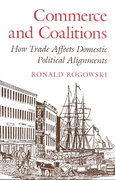..will really appreciate help.
Question 1 - 50 marks Consider an exchange economy with three agents, Ann, Bob and Charlie and 2 goods, meat and salad. The preferences of the three individuals can be characterised as follows: (i) Ann always demands equal quantities of both goods, (ii) Bob spends two thirds of his income on salad and the rest on meat, (iii) Charlie never consumes meat. Normalise the price of meat to one and use p to denote the price of salad. a) Consider the indifference curves presented in Figure 1. Which indifference curves reflect the preferences of Ann? Which one those of Bob? Which graph represents the indifference curves of Charlie? Figure 1: Indifference Curves [6 marks] indifference Comm Tangency pairs between budget and indifference comes ate at the Different Budget Meet (A) (B) Meat Ment (C) (D) continues on next page . ..[iii (bl An annuity is payable continuously throughout the lifetime of a person now aged exactly 60, but for at most 10 years. The rate of payment at all times t during the rst ve years is $10,000 per annumlpa), and thereafter it is $12,000 pa. The force of mortality of this life is 0.03 between the ages of 60 and 65, and 0.04 between the ages of 65 and 70. Calculate the actuarial present value of this annuity assuming a force of interest of 0.05. Assuming that mortality and interest are as above, calculate the expected present value of: A 10year term assurance which pays $50,000 immediately on death issued to the 60- yearold in (i) above. A 10year endowment assurance which pays $50,000 on maturity or immediately on earlier death issued to the 60-year-old in (i) above. For a 20-year temporary life annuity-due of $100 per year on a 65-year-old, you are given the following: ii} (ii) [iii] px = 0.00135, 3: 2 65 1' = 0.05 Y is the present value random variabie for this annuity. (a) Write down the present value random variable Y for this life annuity. {b} Calculate the probability that Y is less than $1000. 4 Exercise 4. ('35 points) lConsider a pure-exchange economy with two goods {1, 2} and two consumers {A, B}. A and B wish to trade with one another to maximize their individual utilities. Slippose A is endowed with 1 unit of good 1 and half a unit of good 2, i.e., MA = (1, i)- B is endowed with 1 unit of good 1 and 1.5 units of good 2, i.e., MB 2 (1, g]. In addition, suppose their utility functions are given by was) = ease var-B) = arrears\" [1} Draw an Edgeworth box indicating the endowment and preferences for this problem. [2) Find the set of Pareto optimal allocations of this economy. [3} Find the equilibrium consumptions of A and B and determine the equilibrium price ratio that Supports them. [4} Is the equilibrium allocation in [3} Pareto optimal? {5) Show that there are gains from trade in this situation (compared to the endowment point]. From what endowment point leading to the same equilibrium allocation would there be no gains from trade? [6} Suppose that instead of the above utility function, u3(:-:B') = (1."? )3!I 3(32'? )1! 8. How does this change the equilibrium consumption you found in part (3)? What is the intuition for this? [7) Go back to the original problem. Suppose the government decides that the competitive equilibrium is not a good allocation and they would prefer for A and B to consume respectively (E, 3,.) and (E, 2). Is this a competitive equilibrium for some endowments? 1Why or why not? Is it attainable from the initial endowments? [8) Suppose that the government can announce that 111 = p2 = 1. 1Would this achieve the government's dmired allocations? [9) Could the government achieve its objective through lump sum redistribution [i.e., a change of the initial endowments such that there are still 2 units of each good in this economy}? If so, how could it redistribute to achieve its desired allocation









